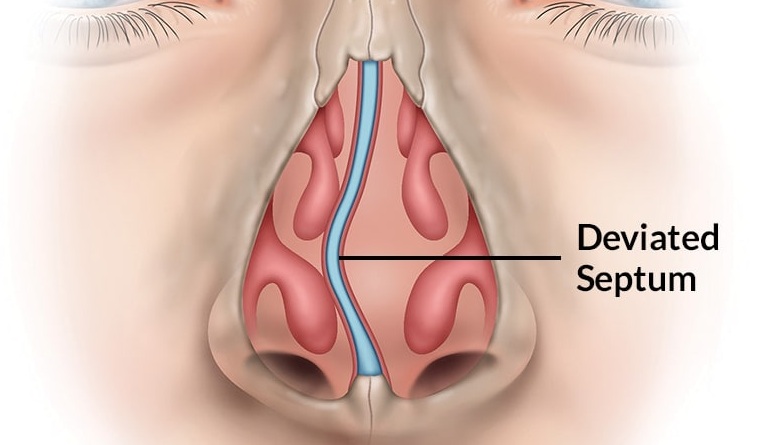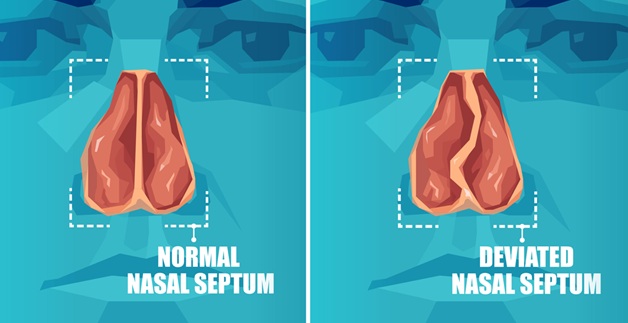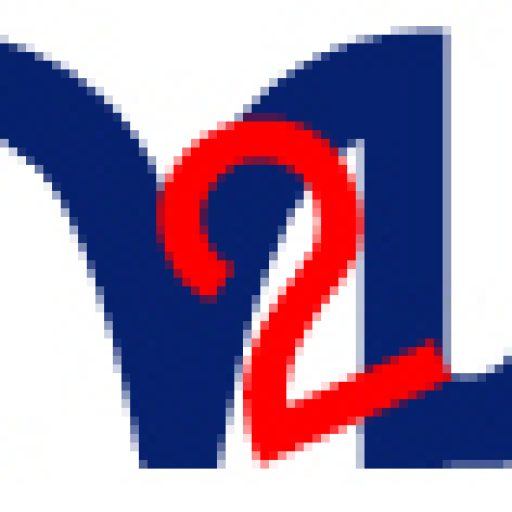Deviated Nasal Septum (DNS)
A Deviated Nasal Septum (DNS) occurs when the wall that separates the two sides of your nose is shifted to one side. A deviated septum means that the nasal septum (the bone and cartilage that divide the nose in the middle) is crooked, making one nasal passage smaller than the other. This can make it difficult to breathe through your nose . If it’s severe, breathing through the nose can be difficult and your sense of smell may be affected. Most people have a small amount of deviation (crookedness), but only people with severe deviations need treatment.

Causes of Deviated Nasal Septum (DNS)
Most people are born with a slightly uneven nasal septum which doesn’t cause any problems. You may develop a deviated septum after an injury to your nose that moves the nasal septum out of position, for example, a car accident, sporting injury or a fall.
Trauma to the nose, such as a blow to the face
A congenital disorder, such as malformation during fetal development
Genetic connective tissue disorders such as Marfan syndrome, homocystinuria and Ehlers–Danlos syndrome
Symptoms of Deviated Nasal Septum (DNS)
Difficulty breathing through your nose
Nasal congestion
Frequent nosebleeds
Frequent sinus infections
Facial pain
Headaches
Postnasal drip
Noisy breathing during sleep
Headaches or facial pain
Noisy breathing
Disturbed sleep
Obstructive sleep apnoea
A blocked nose, which may be affect only one nostril, or may alternate between nostrils
Nasal bleeding
Frequent sinus infections
Most people have no symptoms, and don’t know even know that they have a Deviated septum. If you have severe deviated septum, the most common symptom is difficulty breathing through the nose, which is usually worse on one side.
Self Test to find
Lean your head back and look into a mirror. (You can also take a picture of the underside of your nose.) If your nostrils are uneven, or if they’re two different sizes, you might have a deviated septum.

You might also be able to tell by taking the deviated septum self-test
Using your finger, hold one of your nostrils closed.
Breathe in and notice the airflow. Be mindful about how easy or difficult it is to breathe through that nostril.
Now, hold your other nostril closed and repeat the exercise.
If you have difficulty breathing through one or both nostrils, you could have a deviated septum.
Diagnosis of Deviated Nasal Septum (DNS)
Symptoms through History taking
Clinical examination
X-Ray findings of Nasal septum by Paranasal view
CT findings on CT-Para Nasal Sinuses
If needed a nasal endoscope — a long tube with a bright light and camera at the tip to see further into your nose.
Conditions other than a deviated septum can also cause nasal congestion. For example, you may have a different kind of structural problem inside your nose, chronic sinusitis or allergies. In rare cases, bleeding and blockage can be signs of a nasal tumor.
Treatment for Deviated Nasal Septum (DNS)
Medical Management for Deviated Nasal Septum (DNS)
Mild septal deviation may cause occasional symptoms.
Some medicines can help you breathe through your nose, but they are usually more effective if the cause of your nose blockage is not the septum itself.
Antihistamine nasal sprays
Nasal corticosteroid sprays
Saline nasal sprays or nasal douche
Nasal decongestants.
Nasal steroid sprays.
Antihistamines.
Surgical Management
Septoplasty
The most common deviated septum treatment is septoplasty. If you have breathing problems, frequent sinus infections or other bothersome symptoms, a septoplasty may be an option for you.
During a septoplasty, a surgeon reshapes your septum. This may involve adding or removing bone and cartilage.
Typically, septoplasty is an outpatient procedure. It takes between 30 and 90 minutes to complete.
Rhinoplasty
surgery to reshape the nose
may also be needed. While nasal surgery is usually safe, there is a small risk of complications such as bleeding, infection or numbness around the nose or front teeth.
Complications of Deviated Nasal Septum (DNS)
A deviated septum can cause disruptions to your breathing and sleep, which may affect your quality of life.
In some cases, a deviated septum is associated with high blood pressure, which resolves after the deviated septum is fixed with surgery.
Hi2U Clinic / Happy Homoeopathy Clinic for Homoeopathic treatment
medlight2u.com
A light on Practice of Medicine (The information provided is for informational and educational purposes only and should not be considered professional advice)
- Sleeplessness (insomnia)
- Furuncle Nostril
- Presbyopia meaning “old eye”
- Oral cancer
- Gestational Trophoblastic Neoplasia (GTN)
Acne Acne vulgaris Acute Renal Failure Adrenal cortex Angina Angina Pectoris Aortic Regurgitation (AR) Aortic Stenosis (AS) Chest pain Chronic pyelonephritis Coarctation of Aorta Cough cyanosis Cystic acne Dehydration depression Diabetes Mellitus Diagnosis of Aortic Stenosis Dr.KTS DR K TAMILSELVAN Fatigue Heart Failure Hypertension Hypokalemia Hypothyroidism Ischemic Heart Disease LBBB Mitral Incompetence Mitral insufficiency Mitral valve prolapse Nocturia Patent Ductus Arteriosus PDA Polyuria Proteinuria pulmonary hypertension Pulmonary Stenosis ST Depression Symptoms of Acne Syncope Treatment for acne valvular heart disease Ventricular Septal Defect VSD Zits



Leave a Reply